December 2007 Edition
inspection strategies

Flatness and parallelism are never synonymous
"We can't see past the choices that we don't understand." – From The Matrix – Reloaded
By Richard Clark
A few days ago, I met with a client to discuss his measurement equipment needs for a model part he was planning to manufacture for a relatively new customer. The part was a plate that would be assembled into a motorcycle transmission. As seen in the first image below, the plate had a "bottom"face that was designated as Datum A. The "top"face was toleranced for parallelism (to Datum A) as well as flatness. So far, nothing seemed out of the ordinary.
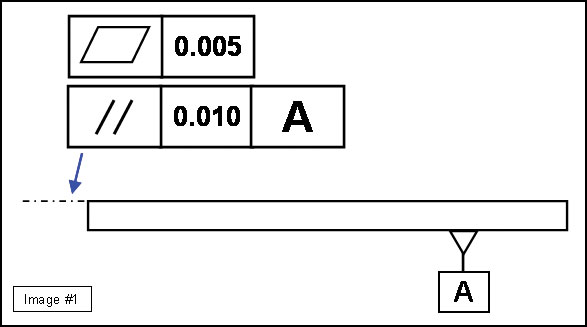
As the customer and I reviewed the drawing in more detail, I noticed (in the specific instructions toward the corner of the drawing) what I believe to be a very common misperception: "Flatness will be confirmed with a dial indicator using a surface plate as the datum."Before I went any further with the customer, I felt obligated to clear up some misunderstanding.
If you engage in research about any geometric dimensioning and tolerancing (GD&T) standard, you'll learn very quickly that flatness is not a characteristic referenced to a datum. Most GD&T references define the following:
Flatness – The condition of a surface having all elements in one plane.
Parallelism – The condition of a surface, line, or axis which is equidistant at all from a datum plane or axis.
It's not rocket science. It's some of the most basic geometry you'll need to understand. Just do everyone a favor and don't make it any more difficult than you need to.
It's not rocket science. It's some of the most basic geometry you'll need to understand. Just do everyone a favor and don't make it any more difficult than you need to.
Flatness is a feature compared to itself, while parallelism requires that a feature be compared to a datum.
To clear up the concept, consider the example of a kitchen table. We purchase a new table from a furniture store and are fairly certain that the flatness of the tabletop to be less than a fraction of an inch. If the table legs are the same lengths within a few fractions of an inch, we can be confident the tabletop is parallel to the kitchen floor.
Now, if we remove both legs from one side of the table, the tabletop is not even close to parallel to the kitchen floor – but the tabletop is still just as flat as before.
The table top is flat and (because the length of the legs is equal) the top is ALSO parallel to the kitchen floor.
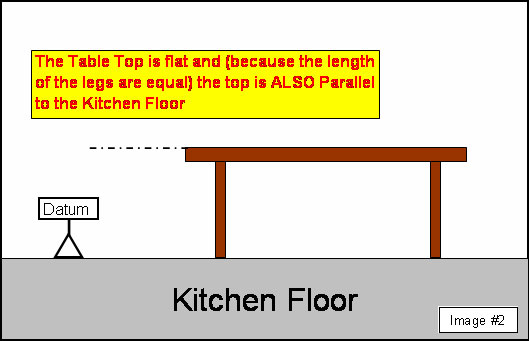
The parallel – pardon the pun – in an industrial application is found when leveling jack screws (or similar devices) are used to "level out"the "wave"(and/or the out-of-parallelism) of the "bottom"surface. After this is accomplished, we use an indicator to measure the out-of-flatness of the "top"surface and, in effect, measure the surface against itself.
The table top is still just as flat but it's no longer parallel to the floor.
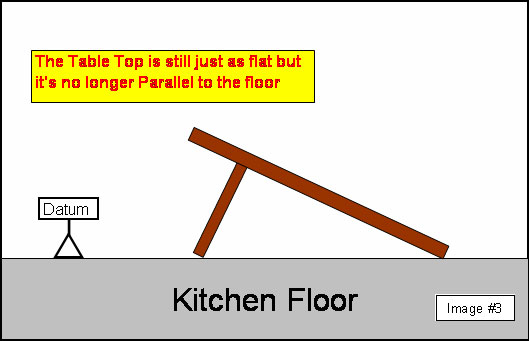
The parallel – pardon the pun – in an industrial application is found when leveling jack screws (or similar devices) are used to "level out"the "wave"(and/or the out-of-parallelism) of the "bottom"surface. After this is accomplished, we use an indicator to measure the out-of-flatness of the "top"surface and, in effect, measure the surface against itself.
If we want to measure the parallelism of one side (we'll say the bottom) to the other side (the top), we can rest the bottom on a surface plate and compare one plane (or axis) to the other.
The bottom face is "leveledout" the measure the flatness of the top face.
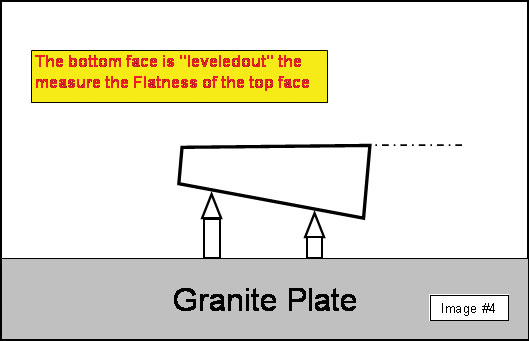
Even though the top and bottom faces of the part are flat, they are not parallel to the Datum.
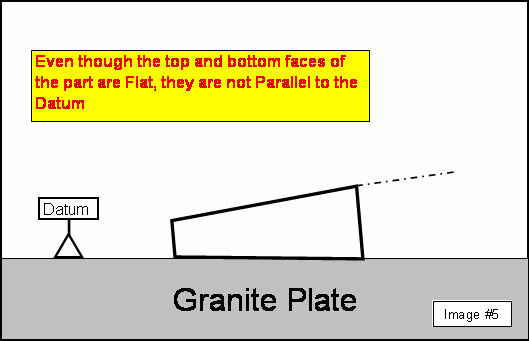
It's not rocket science. It's some of the most basic geometry you'll need to understand. Just do everyone a favor and don't make it any more difficult than you need to.
Remember: Keep it simple. You know the rest.
Four-star columnist Richard Clark is a quality systems consultant from Portland, IN. To order a copy of his book Exposing the Myths of Industrial Precision Measurement or to offer feedback, e-mail
rcmetrology@yahoo.com.
What do you think?
Will the information in this article increase efficiency or
save time, money, or effort? Let us know by e-mail from our
website at www.ToolingandProduction.com or e-mail the editor at
dseeds@nelsonpub.com.